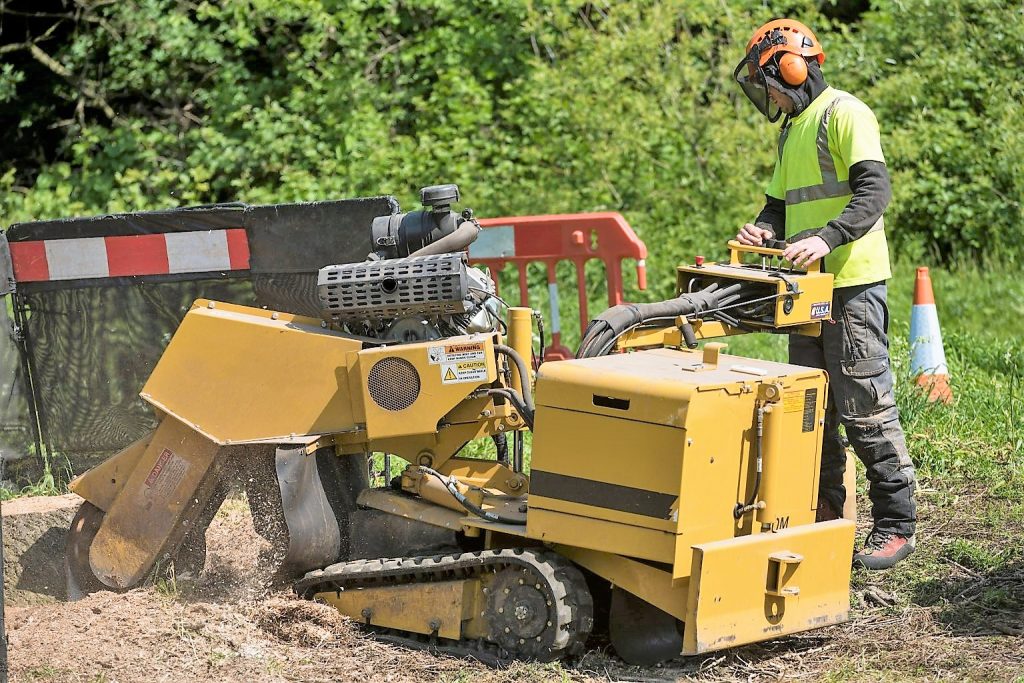Identifying and Treating Common Tree Diseases
Trees, with their majestic presence and vital role in our ecosystems, are not immune to diseases. Recognizing the signs of common tree disease is crucial for prompt intervention and preservation of these green giants. In this comprehensive guide, we’ll explore some prevalent tree diseases, their identifying features, and effective treatment strategies employed by arborists.

1. Recognizing the Signs
Before delving into treatment options, it’s essential to be able to identify the signs of tree diseases. Keep a keen eye on your trees for:
a. Unusual Discoloration:
- Yellowing, browning, or blackening of leaves can signal various diseases. For instance, sudden oak death manifests as brown spots on oak leaves.
b. Abnormal Growth Patterns:
- Wilted, stunted, or distorted growth can indicate infections. Dutch Elm Disease, for example, causes wilting and yellowing of leaves.
c. Presence of Fungi:
- Mushrooms, conks, or cankers on the trunk are signs of fungal infections. Armillaria root rot often produces clusters of mushrooms at the base of infected trees.
d. Bark Abnormalities:
- Cracks, lesions, or cankers on the bark may indicate diseases like canker diseases or bacterial infections.
2. Common Tree Diseases and Their Treatments
a. Dutch Elm Disease (DED):
- Identification: Wilted, yellowed leaves and twig dieback.
- Treatment: Pruning infected branches and applying fungicides can help manage DED. However, prevention through insect control is crucial.
b. Oak Wilt:
- Identification: Interveinal chlorosis, wilted leaves, and tree decline.
- Treatment: Proper pruning practices, injecting fungicides, and preventing root grafts between oaks can mitigate Oak Wilt.
c. Fire Blight:
- Identification: Wilting, blackening, and a burnt appearance on leaves.
- Treatment: Pruning affected branches during the dormant season and applying antibiotics are common strategies for Fire Blight control.
d. Armillaria Root Rot:
- Identification: Clusters of mushrooms at the base, dieback, and decline.
- Treatment: Improving tree vigor, removing infected roots, and applying fungicides can help manage Armillaria root rot.
e. Anthracnose:
- Identification: Irregular leaf spots, defoliation, and twig dieback.
- Treatment: Fungicide applications during the growing season and promoting overall tree health can control Anthracnose.
f. Powdery Mildew:
- Identification: Powdery white substance on leaves.
- Treatment: Pruning to improve air circulation, using fungicides, and selecting resistant tree varieties can help manage Powdery Mildew.
3. Preventative Measures for Tree Diseases
a. Proper Tree Care:
- Maintain good tree health through proper watering, mulching, and fertilization practices.
b. Regular Inspections:
- Conduct routine inspections to catch signs of diseases early on.
c. Pruning and Thinning:
- Proper pruning to improve air circulation and sunlight penetration can reduce the risk of fungal infections.
d. Disease-Resistant Varieties:
- When planting new trees, choose species and varieties known for resistance to prevalent diseases in your area.
e. Professional Consultation:
- Arborists play a crucial role in disease prevention. Regular consultations and inspections by certified arborists can ensure early detection and effective treatment.
4. Consulting with Arborists: The Expert Touch
While some tree diseases can be managed through homeowner interventions, consulting with certified arborists is often the best course of action. Arborists bring a wealth of knowledge and experience to the table, enabling them to accurately diagnose diseases and prescribe effective treatments.
Arborists conduct thorough assessments, considering factors like environmental conditions, tree species, and the extent of infection. They may recommend targeted treatments such as fungicide applications, soil amendments, or even the removal of severely infected trees to prevent further spread.
In addition to addressing existing issues, arborists are adept at implementing preventive measures to safeguard the overall health of your trees. These measures may include specialized pruning techniques, insect control strategies, and ongoing monitoring to catch potential problems before they escalate.
5. Conclusion: Nurturing Healthy Trees
Identifying and treating common tree diseases requires a combination of vigilance, knowledge, and timely intervention. By familiarizing yourself with the signs of prevalent diseases and adopting preventive measures, you can contribute to the well-being of the trees on your property.
However, when in doubt or faced with a severe infection, seeking the expertise of certified arborists is a wise investment in the long-term health and beauty of your trees. Together, through informed care and professional guidance, we can ensure that our leafy companions continue to thrive and enrich the environment for generations to come.
